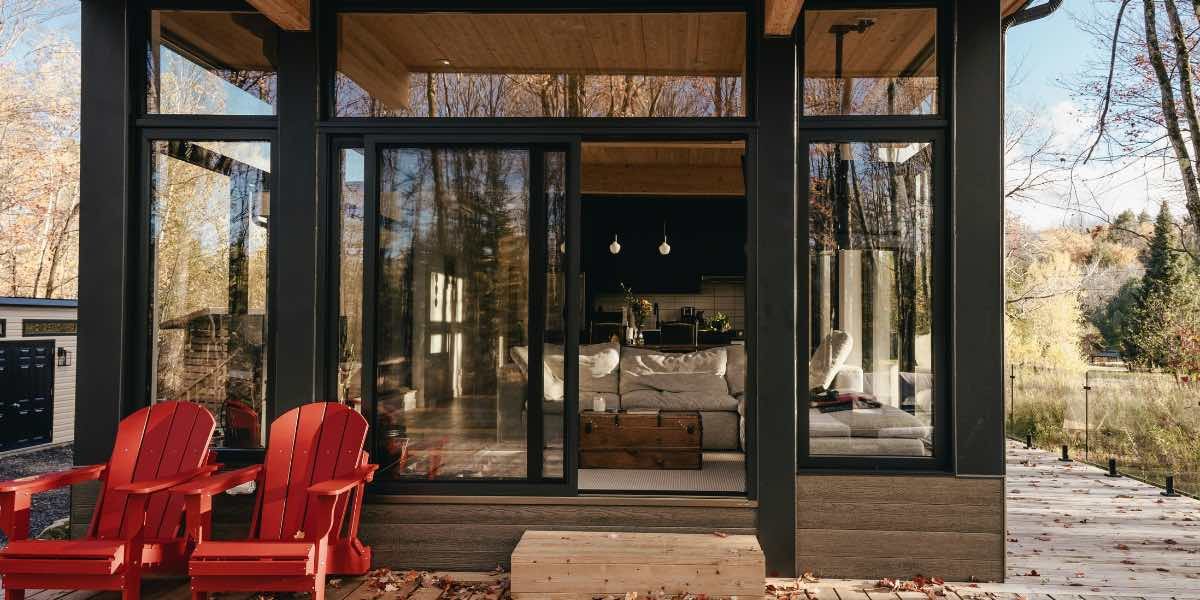The appeal of modular homes in mountain towns continues to evolve, shaped by changes in building practices, regional housing needs, and environmental considerations. As demand for housing in remote or high-altitude locations grows, some communities are beginning to explore modular construction as a way to navigate the constraints posed by geography, climate, and seasonal labor availability.
While not a new concept, modular construction is being revisited in contexts where adaptability, construction speed, and reduced site disturbance hold practical value.
Read also: Declutter Your Home: Simple Steps to Stay Organized
What Factors Are Influencing Interest in Modular Housing?
Housing development in mountain regions is often shaped by a specific set of challenges. Steep terrain, limited buildable land, variable weather conditions, and logistical access can add cost and complexity to traditional on-site construction. Modular homes—assembled off-site in controlled environments and then transported to their destination—are viewed by some planners and homeowners as a way to manage these conditions with greater efficiency.
In areas with short building seasons, modular construction allows critical phases of homebuilding to occur year-round, off-site, regardless of local weather. Site preparation and utility installation can proceed while the structure itself is being fabricated. Once delivered, the modules may be assembled in a matter of days, reducing exposure to delays caused by storms or early snowfall.
This dual-track process is of particular interest in high-altitude towns where local labor shortages or weather-related shutdowns are common.
How Do Modular Designs Adapt to Mountain Terrain and Climate?
Homes built at elevation often require features that respond directly to climate and environmental exposure. Snow load capacity, insulation quality, and wind resistance are key performance factors, especially in regions where winter lasts several months and access roads can be impacted by snow or ice.
Modular homes can be customized to meet these demands. Rooflines may be pitched to shed snow, siding materials chosen for durability under repeated freeze-thaw cycles, and windows selected for their thermal performance. In some instances, homes are built with reinforced chassis or heavier framing to withstand wind exposure on open slopes or ridgelines.
Terrain also shapes the foundation approach. In mountain towns where slopes are steep or lots irregular, pier foundations or hybrid systems may be used to accommodate the site without extensive excavation. This can help limit environmental disturbance, reduce costs, and allow for placement on parcels where traditional slab construction might be impractical.
What Types of Spaces Are Prioritized in These Homes?
Design priorities in modular mountain homes vary depending on use, but many focus on compact, efficient layouts that reflect both lifestyle and location. Storage is often built into the walls or under stairs to accommodate gear associated with outdoor activities. Entryways may include functional elements such as mudrooms or bench seating, allowing residents to transition from outside without tracking in moisture or debris.
Windows and shared living spaces are typically oriented toward scenic views or daylight access. In colder climates, passive solar orientation is sometimes considered to reduce heating loads. Materials used inside the home often lean toward natural finishes or low-maintenance surfaces that perform well with temperature fluctuations and high foot traffic.
Some designs accommodate part-time or seasonal use, with features such as remotely monitored thermostats or off-grid systems for water and power. In other cases, homes are designed for year-round living, with full kitchens, multiple bedrooms, and energy-efficient systems that support long-term comfort.
How Do Logistics Influence Modular Home Delivery in Remote Areas?
The process of transporting and installing a modular home in a mountain setting requires planning that accounts for site access, weather, and road conditions. In narrow valleys or along switchback roads, standard-size modules may be too wide or long to navigate turns safely. Builders sometimes respond to this by dividing homes into smaller sections or delivering them using vehicles designed for tight access.
Crane placement, delivery scheduling, and seasonal weight limits on rural roads can also impact installation. Deliveries may be timed to avoid spring thaw, when unpaved roads are more vulnerable to damage, or coordinated with local authorities to manage temporary closures.
Despite these complexities, the predictability of off-site fabrication may still appeal to those seeking to reduce time on site or to avoid extended disruption in fragile environments.
How Are Modular Homes Perceived in Mountain Communities?
Community perception plays a significant role in determining whether modular construction is welcomed in mountain towns. In some places, concerns about uniformity or construction quality have historically shaped opinions of modular housing. However, as architectural options have expanded and customization has improved, attitudes have become more nuanced.
Contemporary modular homes can incorporate a range of styles, from rustic cabin to modern alpine, depending on local preferences and building codes. In municipalities with architectural review processes, modular designs are often tailored to reflect local design elements, including roof pitches, siding materials, and window proportions.
In regions with a history of design regulation, successful modular integration tends to hinge on how well the structure blends with its surroundings and whether it aligns with broader community planning goals.
What Are the Financial Considerations Involved?
Cost comparisons between modular and traditional homes vary depending on location, delivery, and degree of customization. While modular homes can offer cost control in some respects—such as limiting change orders or reducing weather-related delays—other factors, like transportation to a remote site or specialized equipment for installation, can offset those savings.
Appraisal and lending processes may also differ slightly. Some lenders require additional documentation to verify construction quality or establish comparables in areas where modular homes are less common. Over time, as modular options increase in visibility and consistency, these financial processes may become more streamlined.
In some markets, modular homes are being considered as part of solutions to middle-income housing shortages. They are also explored as seasonal accommodations or second homes that can be built more quickly than traditional methods would allow.
How Might Modular Construction Evolve in Response to Environmental and Planning Needs?
Modular construction may become increasingly relevant in mountain regions that face environmental constraints or development limits. As communities seek to reduce their ecological footprint, shorten construction timelines, or minimize on-site impact, the appeal of prefabricated models could grow.
Newer technologies in off-site construction—such as panelized systems, factory-installed energy systems, and sustainable materials—are likely to influence future designs. These features could allow modular homes to align more closely with goals around energy use, water conservation, or wildfire resilience.
Municipalities might also explore policy tools that enable modular housing within master-planned developments or as part of affordable housing strategies, especially in areas with high tourism-related housing pressure.
Read also: Why Adults Are Creating Playful Spaces at Home
What Role Could Modular Homes Play in the Broader Housing Landscape?
In mountain towns where housing demand outpaces supply and building sites are limited, modular homes may serve as one tool among many to help meet a range of needs. Whether as part of planned neighborhoods, infill lots, or private parcels, these homes reflect a shift toward construction methods that prioritize adaptability and environmental responsiveness.
While not all locations or contexts will support modular development equally, the model continues to offer possibilities for those seeking efficient, design-conscious housing that fits within the physical and cultural contours of mountain life.








